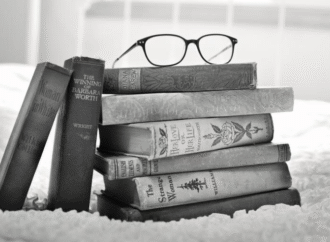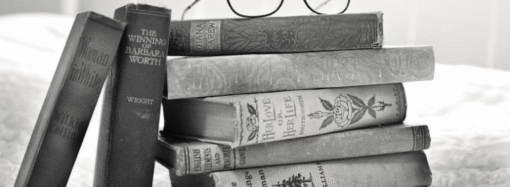“Familiarity breeds contempt” runs the old adage, and contempt leads to ingratitude and unhappiness.
What makes a husband impatient with his wife, whom he would never have dreamed of snapping at when they were first dating? Familiarity. What makes one’s work dull and draining? Familiarity. What makes us bored of our home, our family, our city? Familiarity. What makes us lose “the spice of life”? Familiarity.
Among the greatest challenges to a fulfilling and flourishing life is that curse of familiarity.
Yet the word familiar derives from the Latin familiaris, meaning “domestic, private, belonging to a family, of a household.” This provides us with a clue to the real status of the familiar. The familiar things ought to be the dearest things. They ought to hold a special place in our lives, something belonging to our families, our households, so to speak—a place of appreciation and intimacy rather than indifference.
Rather than appreciating our everyday, common realities as something close to our heart, we often take them for granted, however miraculous they may objectively be. It may be cliché to state this—but, then, what are clichés except truths that have become so familiar to us that they, too, have lost their power to affect us as they should?
One remedy for the stultifying effect of becoming “too acquainted” with something is art. In fact, I would argue that one of art’s primary purposes is to heal us of the wounds of overfamiliarity. As G.K. Chesterton writes:
The whole object of real art, of real romance—and, above all, of real religion—is to prevent people from losing the humility and gratitude which are thankful for daylight and daily bread; to prevent them from regarding daily life as dull or domestic life as narrow; to teach them to feel in the sunlight the song of Apollo and in the bread the epic of the plough. What is now needed most is intensive imagination. I mean the power to turn our imaginations inwards, on the things we already have, and to make those things live.
Such is the work of art and culture. Great art “defamiliarizes.” We have to be careful with this term, however, since it is used by neo-Marxist cultural critics to mean the opposite of what I mean here.
These thinkers defamiliarize in order to disenchant. True art defamiliarizes in order to re-enchant. That is the key difference. These thinkers, with their radical skepticism, are suspicious, disillusioned—they deconstruct to reveal the ultimate meaninglessness or even malevolence of the world around us. They make the extraordinary appear ordinary (or worse).
But true art, on the contrary, makes the ordinary appear extraordinary, which in turn enhances our experience of life. Literature professor John Senior writes:
The poet is the man who says ‘Look! Look! You never saw that before.’ And if you follow him, you will see much more than you would have seen by yourself. In doing so, you have enlarged your capacity to experience the world, which is another way of saying to live.
With his unique and penetrating vision, the artist sees things as they really are—in all their preciousness and power and surprise. By shifting our gaze just a little through the force of his art, the artist reveals things to us as new, communicating to us the essence of the object depicted. Experiencing great art—just like the creation of great art—is a process of re-vision: seeing again, as though for the first time.
Consider the strangeness of seeing yourself from the side or behind in a photograph. We are used to catching our face in the mirror from the same general angle, but a camera can make our own face suddenly foreign to us. By analogy, the artist is the one who shifts the angle of our perception so that we see the same thing from a new perspective and, startled, realize again its worth and its mystery.
Aristotle teaches us that art is mimetic—that is, an imitation of something. But that imitation is more than a mere carbon copy. The imitation, through the intricacies of the artistic process, reveals the essence of the thing imitated.
Will Durant, summarizing the thought of Aristotle, writes, “The aim of art is to represent not the outward appearance of things, but their inward significance.” If art only recreated the outward appearance of what it imitated, we’d be no better off than before—it would be just as familiar as ever. But by subtle alterations and drawing our attention to key features of the object imitated, the artist goes beyond appearance and penetrates to the core of what he shows us.
Moreover, by leading us into the work of art and its clarity of vision, the artist equips us to return to the real world with a clearer, more appreciative gaze. We have been “trained,” as it were, to see more truly again. In the words of the Rev. Francis Bethel, “Good art emphasizes beautiful features with the purpose of teaching us to perceive and savor more intensely the riches of reality.”
For example, Wendell Berry’s love poem “The Wild Rose” comments on the hiddenness of the familiar while also embodying art’s ability to bring the familiar into new focus. Through the poem’s reflections, Berry comes to see his wife with fresh eyes.
Sometimes hidden from me
in daily custom and in trust,
so that I live by you unaware
as by the beating of my heart,
suddenly you flare in my sight,
a wild rose blooming at the edge
of thicket, grace and light
where yesterday was only shade,
and once more I am blessed, choosing
again what I chose before.
Berry’s poem reminds us that, though it’s impossible for us to constantly “feel” the intense love toward our spouse, the love remains there, and its emotional component can and will resurface suddenly, like a rose blooming at the edge of a thicket. We are reminded of the treasure we have in our spouse and the goodness of the choice we made of them.
Or take something simpler than a marriage: a single wave in the ocean. Katsushika Hokusai’s woodblock print “The Great Wave off Kanagawa” depicts a great, roiling, rolling wave curling over some empty boats. It’s clear what the painting imitates, though the print is far from photorealistic. Photorealism is not the point. The point is to show us something of the power, symmetry, energy, order, wildness, and beauty of a wave—these are a part of its essence.
If we study the painting, then when we leave it and go to the real ocean and watch waves booming onto the sands, we will understand and appreciate the ocean better, in some sense. The waves are no longer so familiar to us—they are as mysterious and foreign as if we were the first to ever see them, like “some watcher of the skies / When a new planet swims into his ken; / Or like stout Cortez when with eagle eyes / He star’d at the Pacific—and all his men / Look’d at each other with a wild surmise— / Silent, upon a peak in Darien.”
—
Image credit: Public domain
6 comments















6 Comments
Chris van Schoor
August 15, 2023, 5:03 amExcellent article! It opened my eyes. As a painter who leans towards hyper-realism (but always with appropriate "photo-shopping"), I have more understanding of my own work (let alone others)!
REPLYJB
August 17, 2023, 11:22 amBeautiful! Thanks
REPLYLori Cameron
August 20, 2023, 9:32 pmExcellent!
REPLYCadence McManimon
August 22, 2023, 10:11 amWell written! I appreciate the insight of art's purpose, so often misused or represented in modern progressivism.
REPLYElizabeth
September 15, 2023, 7:31 amThank you for this brilliant insight that resonates so strongly with me! May you continue to grow and become all you were created to be! Art is powerful, often touching us emotionally before logic or intellect raise walls to constrict our response. Your observations and analysis are spot on.
REPLY